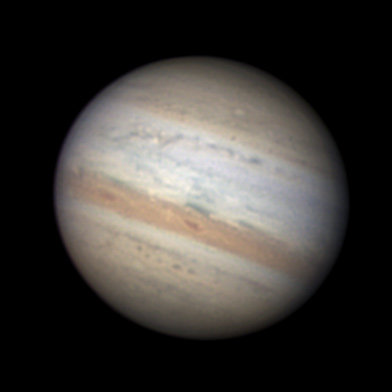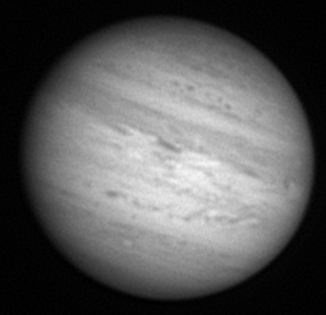Jupiter & SEB outbreak
Imaged under poor transparancy (between 30-70% of normal brightness) but fair (to poor) seeing conditions (imaged right before the seeing got really bad).
And this is the R-RGB version which shows some more details:

And an animation showing the outbreak region in infrared, red, green and blue light (you can see the image quality degrade from infrared to blue light. This is because of two reasons:
- the seeing got worse, and I imaged from Ir, R, G to B
- shorter wavelengths (blue light) are more affected by atmospheric distortions than the longer wavelengths (infared light). The bigger the telescope (and the worse the seeing, or the lower the object is in the sky), the more prominent this difference is. Theoretically the shorter wavelengths allow for more detail to be captured, but for my setup that only happens under really good seeing conditions and when the target is high in the sky (> 50 degrees). Jupiter only got to about 34 degrees altitude this year, but next year I expect better results especially for the green and blue channels when it will reach almost to 50 degrees.

Basler Ace acA640-100gm
Meade Starfinder 10

